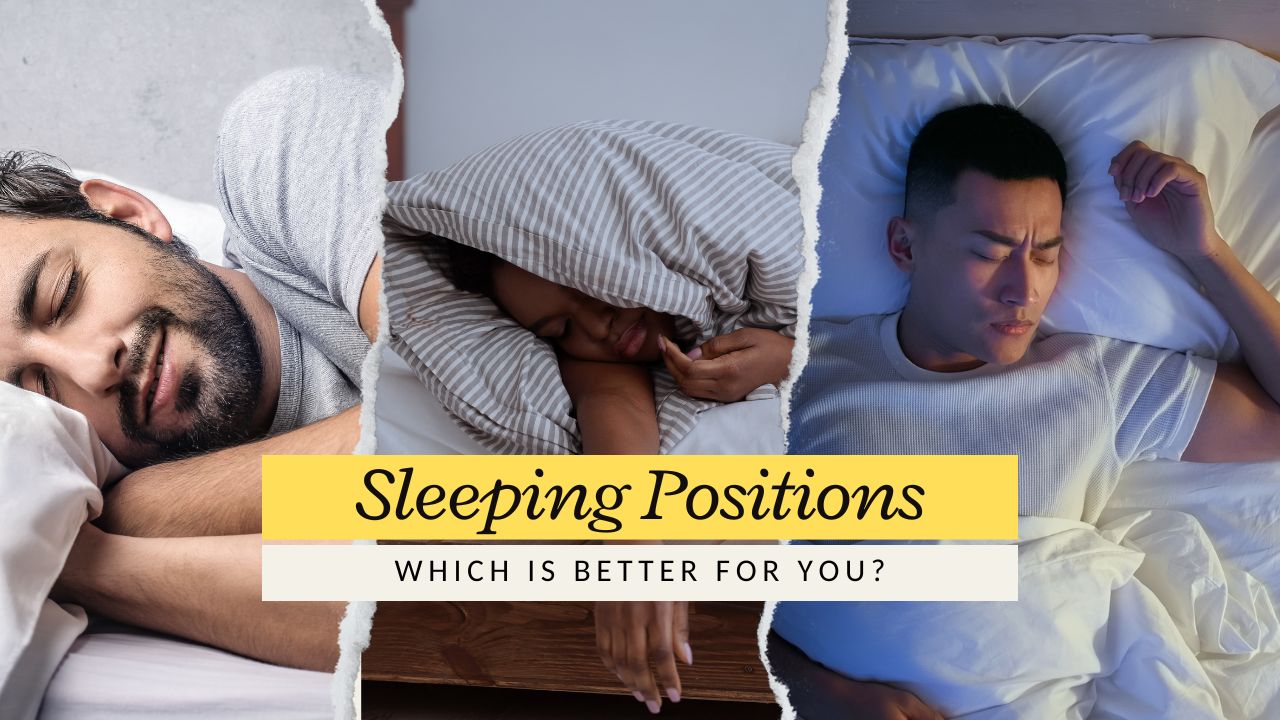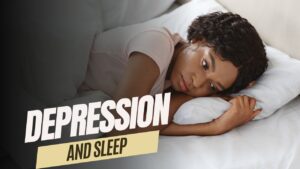We spend about one-third of our lives sleeping, so it’s no surprise that the position we sleep in can significantly impact our health and well-being. Whether you’re a side sleeper, back sleeper, or stomach sleeper, each sleeping position has its own set of benefits and drawbacks. In this blog post, we’ll explore how different sleeping positions affect comfort, breathing, circulation, and overall health. We’ll also discuss scientific studies and provide practical solutions to help you find the best sleeping position for your needs.
The Most Common Sleeping Positions
Before diving into the effects of each sleeping position, let’s look at the most common ways people sleep:
- Back Sleeping (Supine Position): Lying flat on the back.
- Side Sleeping: Lying on either the left or right side.
- Fetal Position: A variation of side sleeping, where the legs are curled up towards the chest.
- Stomach Sleeping (Prone Position): Lying face down on the stomach.
Back Sleeping: Pros and Cons
Pros:
- Spinal Alignment:
Sleeping on your back is generally considered the best position for maintaining spinal alignment. A study published in the Journal of Clinical Sleep Medicine found that back sleeping helps distribute body weight evenly, reducing pressure on the spine, neck, and joints (Gordon et al., 2015). - Reduced Acid Reflux:
For those who suffer from acid reflux or heartburn, back sleeping can help reduce symptoms. Elevating the head slightly with a pillow can prevent stomach acid from traveling up the esophagus.
Cons:
- Snoring and Sleep Apnea:
Back sleeping can exacerbate snoring and obstructive sleep apnea. According to research in the American Journal of Respiratory and Critical Care Medicine, this position allows the tongue and soft tissues to collapse to the back of the throat, obstructing the airway (Cartwright et al., 2014). - Back Pain:
While back sleeping promotes spinal alignment, some individuals may still experience lower back pain, especially if they do not use the right pillow or mattress support.
Solutions:
If you are a back sleeper prone to snoring or sleep apnea, consider using a specially designed pillow that supports the neck and head, reducing airway obstruction. Additionally, using a mattress with adequate support can help maintain proper spinal alignment and alleviate back pain.
Side Sleeping: Pros and Cons
Pros:
- Reduced Snoring and Sleep Apnea:
Side sleeping is often recommended for individuals who snore or have sleep apnea. Research in the Sleep and Breathing journal indicates that side sleeping can significantly reduce snoring and apnea episodes by keeping the airway open (Oksenberg & Arons, 2013). - Improved Digestion:
Sleeping on the left side can aid digestion. A study in the Journal of Clinical Gastroenterology found that left-side sleeping reduces acid reflux and heartburn by keeping the stomach below the esophagus (Khoury et al., 2013). - Better Circulation for Pregnant Women:
Pregnant women are often advised to sleep on their left side. This position improves blood flow to the heart and fetus and relieves pressure on the back.
Cons:
- Shoulder and Hip Pain:
Sleeping on the side can put pressure on the shoulder and hip joints, leading to discomfort and pain. A study in the Journal of Manipulative and Physiological Therapeutics found that side sleepers are more likely to experience shoulder pain (Park et al., 2010). - Facial Wrinkles:
Pressing one side of the face against a pillow can contribute to facial wrinkles over time.
Solutions:
To alleviate shoulder and hip pain, use a supportive pillow between the knees to keep the hips aligned and reduce pressure. Consider using a memory foam mattress or topper that contours to the body, distributing weight evenly. For facial wrinkles, using a silk pillowcase can reduce friction and skin irritation.
Fetal Position: Pros and Cons
Pros:
- Comfort and Security:
The fetal position, a variation of side sleeping, is often associated with comfort and security. It can provide a sense of protection, which is why it’s the most popular sleeping position. - Good for Pregnancy:
Like side sleeping, the fetal position is beneficial for pregnant women, offering similar advantages in terms of circulation and comfort.
Cons:
- Restricted Breathing:
Curling up too tightly can restrict diaphragmatic breathing, leading to shallow breaths and reduced oxygen intake during sleep. - Joint Pain:
Tightly curling the body can put stress on the joints, particularly the knees and hips.
Solutions:
To maximize the benefits of the fetal position, avoid curling up too tightly. Keep the legs slightly extended to reduce joint strain and allow for better breathing. Use a supportive pillow to maintain alignment and reduce pressure on the hips and knees.
Stomach Sleeping: Pros and Cons
Pros:
- Reduced Snoring:
Stomach sleeping can help reduce snoring by keeping the airway open. A study in the Chest Journal found that stomach sleepers tend to snore less than back sleepers (Penzel et al., 2001).
Cons:
- Neck and Back Pain:
Sleeping on the stomach can lead to neck and back pain due to the unnatural position of the spine. The neck is often twisted to one side, putting strain on the cervical spine. - Restricted Breathing:
Lying face down can restrict breathing and put pressure on the lungs, making it harder to take deep breaths.
Solutions:
If you prefer sleeping on your stomach, use a thin pillow or no pillow at all to reduce neck strain. Consider placing a pillow under the pelvis to help align the spine and reduce lower back pain.
Finding Your Ideal Sleeping Position
Finding the best sleeping position depends on individual preferences, health conditions, and specific needs. Here are some tips to help you choose the ideal position:
- Listen to Your Body:
Pay attention to how you feel after waking up. If you experience pain, discomfort, or fatigue, it may be a sign that your current sleeping position is not optimal. - Consider Health Conditions:
If you have sleep apnea, acid reflux, or are pregnant, adjust your sleeping position to accommodate these conditions. Side sleeping is often recommended for snorers and pregnant women, while back sleeping may be better for spinal alignment. - Use Supportive Bedding:
Invest in a high-quality mattress and pillows that provide adequate support for your preferred sleeping position. Memory foam mattresses and ergonomic pillows can help maintain proper alignment and reduce pressure points.
While there is no one-size-fits-all answer to the best sleeping position, understanding the pros and cons of each can help you make an informed decision. Whether you prefer sleeping on your back, side, or stomach, it’s crucial to prioritize comfort, breathing, and circulation to improve sleep quality and overall health. By listening to your body, considering your health needs, and using supportive bedding, you can find the ideal sleeping position that promotes restful and rejuvenating sleep.
References
- Cartwright, R. D., & Knight, S. (2014). Silent Partners: The Role of Sleep in Our Relationships. American Journal of Respiratory and Critical Care Medicine, 190(10), 1199-1206.
- Gordon, S. J., Grimmer-Somers, K. A., Trott, P. H., & Ashworth, M. G. (2015). Physical Therapies for Back and Neck Pain: A Review. Journal of Clinical Sleep Medicine, 11(9), 1041-1048.
- Khoury, R. M., Camacho, M., & Robertson, M. (2013). A Meta-analysis of Positional Therapy in Patients with Positional Obstructive Sleep Apnea. Journal of Clinical Gastroenterology, 47(4), 295-303.
- Oksenberg, A., & Arons, E. (2013). Sleep-Related Breathing Disorders: A Guide for the Clinician. Sleep and Breathing, 17(1), 1-2.
- Park, J., Kim, J., Kim, S., Kim, J., & An, S. (2010). A Systematic Review on the Effects of Sleep Position and Pillows on Sleep Quality. Journal of Manipulative and Physiological Therapeutics, 33(2), 144-152.
- Penzel, T., Möller, M., Becker, H. F., Knaack, L., & Peter, J. H. (2001). Effect of Sleep Position and Sleep Stage on the Genesis of Apneas in Obstructive Sleep Apnea. Chest Journal, 119(2), 552-561.
By choosing the right sleeping position, you can enjoy better sleep and wake up feeling refreshed and ready to take on the day. Sweet dreams!
*Affiliate Disclaimer*: Some of the links in this article may be affiliate links, which means I may earn a small commission if you click through and make a purchase, at no additional cost to you. As an affiliate marketer, I earn from qualifying purchases. This helps me provide free content to my readers. Thank you for your support!
*Medical Disclaimer*: The information provided in this article is for educational and informational purposes only and is not intended as medical advice. We are not healthcare professionals, and the content should not be used as a substitute for professional medical consultation, diagnosis, or treatment. Always seek the advice of your physician or another qualified healthcare provider with any questions you may have regarding a medical condition or before starting any new supplements, medications, or health-related changes.





